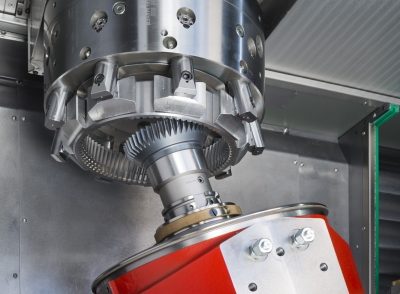German Machine Tools of America Incorporate Hard Scudding Process

The scudding industry took another step forward recently with a new process known as Hard Scudding. The conventional Scudding process works well on green or soft gears, while this new advancement enables the re-machining of hardened gears with a tooth-to-tooth composite error and total composite error in the AGMA 12, DIN 5 range and a surface finish better than 1.5 Ra.
The capital investment is minimal for shops and production departments that already practice Scudding, because the same gear can be run on the same CNC machine, using a solid carbide tool to do the work. Recent testing done on various internal automotive powertrain and agricultural machinery ring gears is showing extremely positive results. Stock division calculations on the tooth position are standard technology for German Machine Tools of America's Profilator gear scudding machine, so re-cutting is quick and easy. Using the latest CNC technology to control the machine kinematics, users are able to transfer this technology to Scudding machinery that is already deployed in the field. Thus, the same part can be cut on different machines at different times, allowing for more flexibility in scheduling. In some cases, this new technology is applicable on near net, pre-hardened gear blanks, allowing significant step reductions in the manufacturing process.
In operation, cutting 60-100 thousandths per flank on a tooth, the Hard Scudding process can be used on a carburized or through-hardened parts; nitriding generally does not provide enough case depth to ensure sufficient stock for "clean-up." An automotive ring gear, for example, that requires 40-50 seconds for Scudding can be Hard Scudded in 25-30 seconds. This process development stands as a viable and cost-effective alternative to conventional grind-and-hone operations, yielding an attractive cost per piece and extended tool life scenario.





